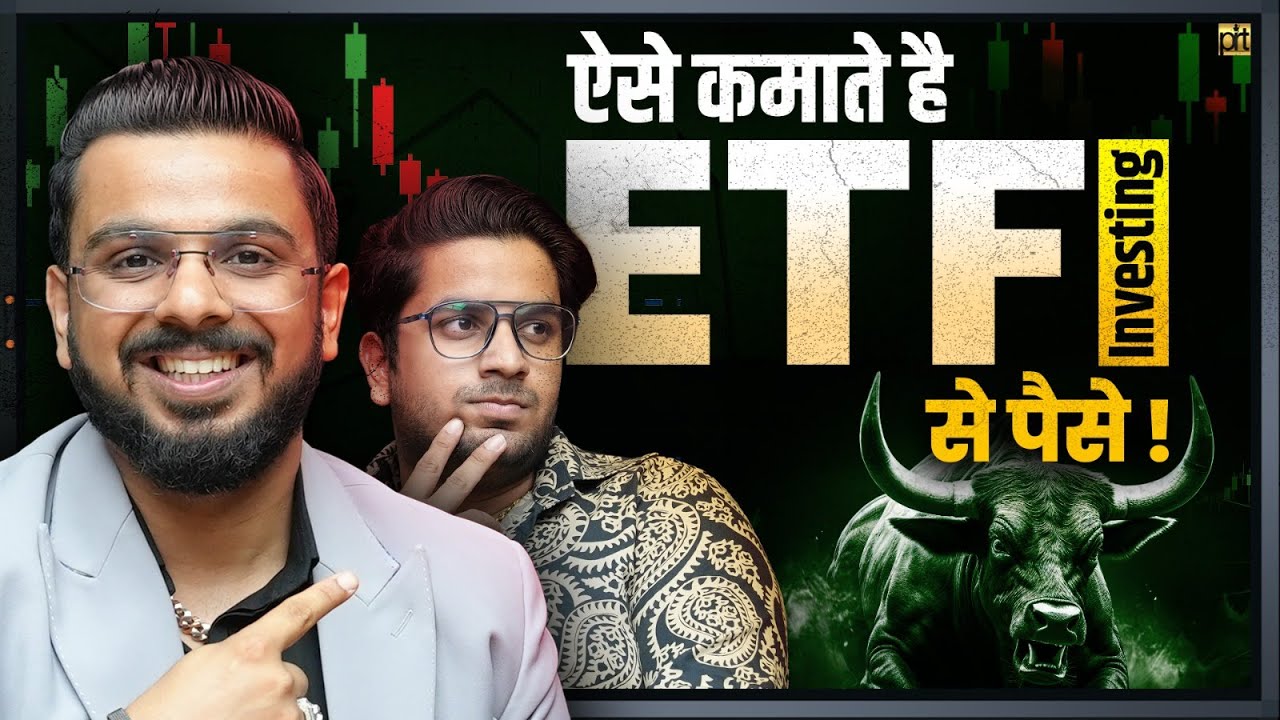ETF Edge: Top trends in active ETFs and why investors are rushing into them
Summary
TLDRIn this episode of ETF Edge, experts discuss key trends in exchange-traded funds (ETFs), focusing on innovation in the sector. Mike and John share insights on the growing popularity of synthetic income strategies, buffer ETFs, and leveraged inverse single-stock products. While there's no major new trend like last year's crypto boom, they expect continued evolution in these areas. The discussion highlights how these strategies provide alternative approaches to equity exposure, reflecting the market's adaptation to changing investor demands.
Takeaways
- 😀 Innovation in ETFs continues, with trends from last year extending into this year.
- 😀 Single stock ETFs and inverse leveraged ETFs are gaining attention, despite concerns around their risk and complexity.
- 😀 Synthetic income strategies, like buffer ETFs, are expected to see growth, offering equity-light versions of the market.
- 😀 The ETF industry is becoming more specialized, with a focus on niche market areas, such as active and thematic ETFs.
- 😀 ESG (Environmental, Social, and Governance) investments are driving ETF growth, with increasing interest in sustainability-focused strategies.
- 😀 Despite volatility, traditional ETFs with a long-term growth perspective continue to thrive in the market.
- 😀 Active management in ETFs is growing, as fund managers seek to outperform passive strategies.
- 😀 There’s a shift towards diversification within ETFs, especially as investors seek less risky, more balanced portfolios.
- 😀 Inverse and leveraged ETFs are still controversial, with concerns about their high-risk nature and complexity for retail investors.
- 😀 The overall trend in ETFs is leaning towards providing greater transparency and flexibility to investors through new investment structures.
Q & A
What is the primary trend seen in ETF launches for 2025?
-In 2025, ETF launches are on track to set a record, with over 288 ETFs launched so far, surpassing last year's numbers. Active ETFs are particularly leading this growth, capturing a significant share of both market flows and assets.
How do active ETFs compare to passive ETFs in terms of market flows?
-Active ETFs are currently accounting for approximately 10% of the total assets but capturing nearly 40% of the market flows. This indicates strong investor interest in active management strategies, especially during volatile market conditions.
What is the role of active ETFs during times of market stress, like in April 2025?
-Active ETFs can leverage bottom-up research to potentially outperform the market during stressful periods. Their ability to actively manage risk and capitalize on specific opportunities provides advantages over passive strategies during volatility.
Can you provide an example of a popular active ETF mentioned in the script?
-An example of a popular active ETF is Jeppy, or the JPMorgan Premium Income ETF. It combines active management with an options overlay strategy, providing both income generation and some downside protection for investors.
Why are investors attracted to fixed-income ETFs, particularly short-term bond funds?
-Short-term bond ETFs are gaining traction due to their low duration and stable yields, typically in the range of 4-5%. These ETFs offer safer, more stable returns, which appeal to investors seeking to avoid risk amid uncertain economic conditions.
What makes international equity ETFs, like those focused on Japan, attractive to investors?
-International equity ETFs are appealing due to their potential for diversification and the outperformance of international markets like Japan and Canada compared to the U.S. market. Investors are seeking global exposure, especially given the current geopolitical and economic uncertainties.
What strategies are being used in alternative ETFs to address investor concerns about market volatility?
-Alternative ETFs, such as buffer ETFs and synthetic income strategies like Jeppy, provide downside protection while allowing for market exposure. These ETFs are designed to be 'equity-light' while offering income generation, making them attractive in volatile markets.
How do leveraged and inverse ETFs appeal to younger investors?
-Leveraged and inverse ETFs appeal to younger investors because they offer the potential for high-risk, high-reward opportunities. These products allow investors to take on greater exposure to volatile and speculative sectors in hopes of capitalizing on significant market movements.
What role do bottom-up research and active management play in the success of certain ETFs?
-Bottom-up research and active management allow ETFs to differentiate themselves by focusing on individual companies or securities, rather than tracking an index. This approach helps active ETFs uncover opportunities that may be overlooked by passive strategies, particularly in international and equity-focused markets.
What key takeaway did the experts provide regarding risk management and long-term ETF investment?
-The experts emphasized the importance of staying the course with a long-term plan, especially in volatile markets. They highlighted that active ETFs, like Jeppy, and short-duration bond funds can provide stability and income while still allowing for market participation.
Outlines

This section is available to paid users only. Please upgrade to access this part.
Upgrade NowMindmap

This section is available to paid users only. Please upgrade to access this part.
Upgrade NowKeywords

This section is available to paid users only. Please upgrade to access this part.
Upgrade NowHighlights

This section is available to paid users only. Please upgrade to access this part.
Upgrade NowTranscripts

This section is available to paid users only. Please upgrade to access this part.
Upgrade NowBrowse More Related Video

Bester Tag für ETF-Kauf und Sparplanausführung! ETF-Experte Arne Scheehl im Interview Teil 1/2

ETF Investing Free Course | Complete Exchange Traded Funds Knowledge | Share Market

ETF Investment Guide | Best ETF for Buying | Step by Step Learn Stock Market Investing

Mengenal Exchanged Traded Fund (ETF)

8 critères pour choisir les meilleurs ETF

ETF Investing for Beginners | Exchange Traded Funds | How to Invest in ETF | ETF vs Mutual Funds
5.0 / 5 (0 votes)